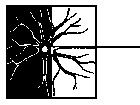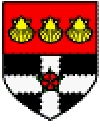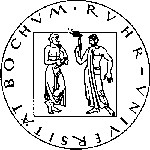
The project is to be designed and implemented by the following partners:
Università Cattolica del Sacro Cuore
Istituto Nazionale Neurologico C. Besta
IBM South Europe and Middle East Africa
The role of the Istituto Auxologico Italiano (the Italian Auxological Institute) in the Consortium is to offer both coordination and management of the joint work and medical-psychological contents required for the development of the demonstrator.
In particular the Centro Auxologico Italiano:
The Istituto Auxologico Italiano is a scientific institute which was born as Foundation
in 1963. Its biomedical research is carried out mainly by means of the diagnosis and
treatment of diseases which undermine harmonious psycho physical development, in relation
to which it follows the course of various diseases over time and intervenes in terms of
prevention, treatment and rehabilitation.
In 1972, it was recognized by the Ministry of Health and by the Ministry for Universities
and Scientific and Technological Research as an "Istituto di Ricovero e Cura a
Carattere Scientifico - I.R.C.C.S." (an institutes that carries out research and care
activities in the biomedical field).
The Istituto Auxologico Italiano is now a private non-profit making organization,
institutionally considered as falling somewhere between a private and public service. It
has thus managed to combine the public service characteristics with the efficiency that is
typical of private bodies, allowing a reduction in costs and appreciable results at the
level of treatment.
The Istituto Auxologico Italiano has three operating health care centers:
? Istituto Scientifico San Michele (Day-Hospital), Via Ariosto 13, Milan.
? Istituto Scientifico San Luca (Hospital), Via Spagnoletto 3, Milan.
? Istituto Scientifico San Giuseppe (Hospital), Via Cadorna 90, Piancavallo (Verbania).
The above mentioned centers cover an area of 185,000 m2 and have a total of 500 beds
Its diagnostic and clinical activities, which are carried out in a modern in and
outpatient departments and supported by the continuous research activities of many
experimental laboratories (Scientific Director: Prof. A. Zanchetti), have allowed the
Istituto Auxologico Italiano to establish a consolidated presence in the field of
nutrition (Laboratorio Sperimentale di Ricerche Nutrizionali, headed by Prof. F. Balzola),
applied psychology (Laboratorio Sperimentale di Ricerche Psicologiche, headed by Prof. E.
Scabini) and endocrinology (Laboratorio Sperimentale di Ricerche
Endocrinologico-Metaboliche, headed by Prof. F. Cavagnini).
In particular, the common work of the different laboratories leaded to an integrated
approach focused on nutritional rehabilitation. The key issues of such approach are:
? the prevention/treatment of the diet-related chronic diseases, such as coronary heart
disease, hypertension and type II diabetes;
? the attention for the quality of life of the patient;
? the multidisciplinary approach involving researchers and clinicians from different
disciplines.
The coordinator of the project is Dr. Giuseppe Riva, Ph.D a well known researcher in the
virtual reality field with a strong background in the assessment and treatment of eating
disorders.

The role of the Università Cattolica del Sacro Cuore (Department of Psychology) in the Consortium is to offer the psychological contents required for the development of the demonstrator. In particular the Università Cattolica:
The Department of Psychology at the Università Cattolica del Sacro Cuore has a long and
notable history of research in the areas of perception and social psychology. Significant
contributions have been made over the past fifty years (the Dipartimento di Psicologia was
the first psychology department established in Italy) by Agostino Gemelli, Padre Zunini e
Giuseppe Girotti.
In the Dipartimento di Psicologia the Virtual Reality research is carried out by GRICO - Gruppo di Ricerca sull'Interazione Comunicativa (Communicative Interaction Research Group).
The Gruppo di Ricerca sull'Interazione Comunicativa (Communicative Interaction Research Group) developed out of the interests of a group of researchers and professors active in psychosocial and cognitive studies (Head of the Unit: Prof. C. Galimberti). Its main concerns are:
GRICO is currently working on a number of research projects in the following areas:
1 - the impact of multimedia technology on family relationships;
2 - uses of hypertext in individual and group situations;
3 - collaborative and competitive interaction in virtual environments;
4 - use of the family dimension in conversations with child-abuse telephone counselling
services;
5 - communication networks and organisational functioning;
6 - conversation analysis and psychosocial practice.

The role of the Istituto Nazionale Neurologico C. Besta (National Neurological Institute) in the Consortium is both to offer the medical-neurological contents required for the development of the demonstrator. In particular the Istituto Nazionale Neurologico C. Besta:
The Istituto Nazionale Neurologico C. Besta is a national referral public hospital devoted to the care of and research on neurological disorders. Clinical neurological and neurosurgical wards and laboratories provide the facilities for the study and treatment of all kinds of neurological diseases.
The Institute was established at the end of world war one and its personnel comprises 195 doctors, 264 hospital attendants and sanitary-technicians, 153 technical employees and 51 administrative employees.
In 1952, it was recognised by the Ministry of Health and by the Ministry for Universities and Scientific and Technological Research as an "Istituto di Ricovero e Cura a Carattere Scientifico - I.R.C.C.S." (an institutes that carries out research and care activities in the biomedical field).
The Istituto Nazionale Neurologico C. Besta takes part in this proposal through its First Division of Neurology, headed by Prof. Tommaso Caraceni. The First Division of Neurology provides general neurological care and is particularly devoted to the diagnosis, treatment and research on extrapyramidal disorders, in particular Parkinson's diseases, Huntington's chorea and other choreas and dystonic syndromes. It is active in the research on extrapyramidal disorders from the pharmacological, physiological and neuropsychological viewpoints. Inpatients as well as outpatients are enrolled in clinical studies which are approved by the local ethical committee.
International relationships:
Muscular Dystrophy Association and Columbia University (USA) for biochemistry and molecular pathology of muscular tissue; Royal Neurological Institute (UK) and National Hospital for Nervous Diseases (London, UK) for extrapyramidal pathology; National Institute of Health, New York University (USA and Euratom for the study of molecular biology of the neuronal degeneration linked to the neuronal pathological ageing; University of North Carolina (USA) for the study of neuroanatomy and neuroembryology; Stanford University (USA) and Oxford University (UK) .

The role of the Politecnico di Milano (Milan Polytechnic) in the Consortium is to offer the technical contents required for the development of the demonstrator. In particular the Politecnico di Milano:
The Politecnico di Milano is an Italian state university, with two technical faculties: Engineering and Architecture.
The Department of Mechanics is a part of the Engineering faculty. In this department work 60 Professors and Researchers, whose activities consist of scientifical and technical research on different subjects of interest in Mechanics, realisation of experimental systems, technology and knowledge transfers, teaching, development of international scientific exchanges.
The Department of Mechanics takes part in this proposal through its Telerobotic Laboratory headed by Prof. Alberto Rovetta. This group is interested in developing instruments for the assessment and rehabilitation of neuromotor diseases. The group is already involved in the analysis of teleoperator performance control in telerobotics by means of EMG signal and in the development of new methodologies for the study of movement diseases. Applications also in telerobotics and in remote control have been applied for the medical field. researches about the development of a surgeon robot for prostate and breast biopsy operation have been developed during the last two years. Modelization and simulation of complex systems with mathematical and experimental models have been performed for prosthesis, transport equipments and telerobotic surgery.
Professor Rovetta is president of the International Society of Theoretical Neurobiology (SINT), president of the Scientific Committee of Italian Society of Virtual Reality (SIRV), president of the International Committee, under the auspices of UITA-UNESCO, for Advanced Technology, president of the World Congress of the International Federation for Theory of Machines and Mechanism (IFToMM), responsible for international relations for the forward projects of the IFToMM, co-president of the International "Man-Machine" Committee of the IFToMM, member of the Scientific Committees of some international Journals.


The role of both the University of Reading and the University of Edinburgh (Department of Psychology) in the network is to offer perception and disability contents required for the devolpment of the demonstrator. In particular these two universities:
The University of Reading and the University of Edinburgh are both major UK higher education institutions with Psychology Departments noted for their research history and formally recognised by the UK charter body for Psychology. The Department of Psychology at The University of Edinburgh has a long and notable history of research in the areas of perception and disability. Significant contributions have been made over the past twenty years by David Lee, Colwyn Trevarthen and Tom Bower. More recently this work has been added to by the likes of Wishart and Donaldson.
The Virtual Environment Research group was formed in the Department of Psychology, Univ. of Edinburgh in 1992 through Medical Research Council Grants to Dr J. Wann for research into "Principles of Perception and Action in Virtual Realities" and to Prof Lee & Dr Wann for "Optic Contraints for Action" and "The Control of Steering". Wann, Rushton and Mon-Williams have also received funding from other sources including commercial contracts for the evaluation of VR displays. Total grant income since 1992 exceeds 3,400,000 sterling. In the past 3 years this group has been studying the perceptual principles underpinning effective Virtual Environment (VE) displays and how user interaction with such systems can be enhanced. This research effort has produced 14 published academic papers in the 1992-1995 period.
Wann and Mon-Williams have now relocated to the Department of Psychology, Univ. of Reading and the Edinburgh VE group now operates two sites:
The Edinburgh site is maintained through further funding from the UK Medical Research Council (Rushton & Wann) for the use of VE in appraising stroke patients exhibiting neglect. The VR work is done in association with the Department of Computer Science at Edinburgh University and the Department of Neuropsychology at Astley Ainslie Hospital.
- Computer Science: The Department of Computer Science at the University of Edinburgh has an excellent international reputation and was recently assigned an "excellent" rating in the last Quality Assessment report, a standard that was matched by only one other university in Scotland.
- Astley Ainslie: The Department of Neuropsychology at Astley Ainslie has an impressive history of research into rehabilitation, and brain damage. Edinburgh Development Trust funding has provided for the establishment of links between the University Psychology Department and Astley Ainslie Hospital.
Research is conducted in collaboration with Department of Computer Science, Univ. of Edinburgh (VR Design), Department of Cybernetics, Univ. of Reading (tele-remote visualizaton), Vision Sciences, Glasgow Caledonian University (ophthalmic response) and Astley Ainslie Hospital (rehabilitation).
The UR/UE group will contribute 18 man/months during the 12month tenure developing VE tools for the analysis and rehabilitation of disorders following stroke. This work will build on existing basic research being funded by the UK MRC in 1995-96

The role of the Ruhr-Universität Bochum in the Consortium is to offer the technical-acoustic contents required for the development of the demonstrator. In particular the Ruhr-Universität Bochum:
The Ruhr-Universität Bochum takes part in this proposal through its Institute Lehrstuhl für allgemeine Elektrotechnik und Akustik headed by Prof. Dr.-Ing. Dr. techn h. c. Jens Blauert.
The Institute was established in 1974 as part of the Faculty of Electrical Engineering. Its personnel comprises 23 academic researchers (electrical engineers, acousticians, psycho-acoustians, linguists, and computer scientists), eight technical and office employees plus 40 students who are in the process of specialising in various fields of acoustics. The Institute is a member of the Bochum-based research consortium "Telepraesenz" (Tele-presence).
Activities in binaural technology started in 1975 with extensive research work into the direction of spatial hearing and its application in information technology and architectural acoustics. The institute has, e.g., developed computer models of the human binaural-hearing system with great application potential in speech technology and electroacoustics. Since about 1985, binaural-room simulation as a major pre-requisite of auditory Virtual Reality, has become an explicit goal of the research and development in the institute.
The institute is co-ordinator of the successful ESPRIT-project SCATIS (Spatially-Coordinated Audio/Tactile Interactive Scenario) and participates in two EC funded projects in the area of Virtual Environment on Multi-Modal Interfaces (TIDE prj. 1216: VETIR, ESPRIT prj. 8579: MIAMI). Currently, eight full-time scientists work in the field of auditory Virtual Reality and binaural technology.

The role of the International Business Machine Co. (IBM
SEMEA) in the Consortium is to offer the technical expertise required for the development
of the demonstrator. In particular IBM SEMEA:
The IBM SEMEA has deep experience with almost all aspects related with Information Technology and is one of the industries leading vendors of personal computers. IBM introduced the first Personal Computer (PC) to use the x86 architecture in August 1981 and help spawn the multi-billion dollars PC industry.
Today, the company develops, manufactures, markets and distributes a variety of PCs - from sub-notebooks to high-end servers - as well as a complete line of monitors, in more than 140 countries world-wide. The IBM ValuePoint PC, upon which Project Elysium is based, is one of the world's largest selling PCs.
Specifically, in case of Virtual Reality (VR) IBM started during mid' 80s several projects at various IBM Research Centers. These efforts created a solid background and resulted in different prototypes and some VR products, like the IBM 3D Interaction Accelerator for the visual inspection of complex 3D geometric models (non-immersive VR) and Project Elysium, developed together with Virtuality Group plc, the to-date only professional and fully-integrated immersive VR system for VR software application developers.
The support to these products is granted both at European level, via a Competence Center located in Paris, and at Italian level with a dedicated IBM SEMEA team for VR with skills covering application development, project management, system integration and educational training.
The role of University of Southampton (Institute of Sound and Vibration Research) in the network is to offer human factors contents required for the devolpment of the demonstrator. In particular University of Southampton:
The Institute of Sound and Vibration Research (ISVR) is a Department of the University of Southampton, formed in 1963 to provide a national focus for research concerned with sound and vibration. The Department has research groups specialising in Human Sciences, Signal Processing, Acoustic and Fluid Dynamics and Automotive Engineering. The institute receives research grants and contracts with Government and Industry in the United Kingdom and abroad. In addition to about 25 academic staff, the institute has about 50 research staffs and 30 visiting researchers.
The Human Factors Research Unit (HFRU) consists of approximately 15 researchers in the Human Sciences Group of the Institute of Sound and Vibration Research. The multidisciplinary research unit has expertise in engineering, physics and electronics in addition to ergonomics, psychology and physiology.
Professor Griffin, head of the Human Factors Research Unit of the Human Sciences Group of the Institute of Sound and Vibration Research, has specialised in the study of human response to oscillatory motion (vibration, shock and low frequency oscillations) for the past 25 years. He is Chairman of the British Standards Institution Sub-Committee concerned with human responses to mechanical vibration and shock, and participates in the drafting of European and International Standards. His research has included human factors research with the uses of head-coupled immersive virtual reality systems, including motion sickness and the effects of computer lags.
For any questions or requests, please contact auxo.psylab@auxologico.it